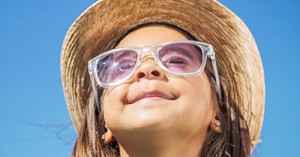Playing or even just spending time outdoors has long been recognized as crucial to positive learning and life outcomes in children. Outdoor spaces thus hold great significance in early education and care learning settings and have been addressed in Quality Area 3 – Physical Environment of National Quality Standards. Element - 3.2.1 mandates that “Outdoor and indoor spaces are designed and organised to engage every child in quality experiences in both built and natural environments”. As such, outdoor spaces must be and must be designed with care and conscious thought.
Plan outdoor spaces in your service in ways that allow a lot of free play. NQS Standard 3.2 expects services to see that “The environment is inclusive, promotes competence, independent exploration and learning through play.” While swings are among the most popular playground equipment, see that they make for multiple use as far as possible. So rather than having several types of equipment that can be used in only one way, outdoor spaces should have tools like ropes, sandpits, logs that invite open-ended interactions. This is because open-ended resources help children to think creatively. Thus a log can become a bridge over an imaginary trench or a wall of a pretend fort to be defended. Such outdoor spaces encourage pretend play which is an important development milestone that indicates a child is ready for abstract thinking.
Design outdoor spaces include lots of natural elements like sand, mud, water, pebbles and real as opposed to artificial grass. There should be trees, bushes, shrubs and rocks to add height and dimension to the natural space while plants, creepers and flowers are important for children’s aesthetic experiences. Include different textures like tiles, rocks, stones, shells, stepping stones, paths, poles and pipes, logs for balancing and climbing as well as climbing frames.
See that outdoor spaces in your service allow for different types of activity. There should be separate areas to allow children to play individually or in small groups as well as those suitable for loud or quiet activities. Some quiet space building ideas are making a tent from sticks, a cubby from recycled sheets or curtains, using pots to surround a secret garden, or bamboo poles to separate a little space. Other components of an outdoor space might be:
- sensory garden
- an area for sustainable water play
- places for children and adults to gather and discuss
- areas for gross motor play, ball games or rough and tumble play
- an outdoor eating area
- areas for push and pull along toys
Facilitate connection with nature through your outdoor spaces. Working on a veggie patch or herb garden can not only be used to teach children about soil and plant growth but help them become aware of passing seasons and the way it affects day to day lives. Indeed even a rainy day can be the start of a great adventure once children are kitted in raincoats and gumboots. However, ensure that there are protective measures in place like shaded areas for children to play outside safely on hot days. Make outdoor spaces accessible for all children by keeping paths clearly marked, free of obstructions and hazards so that they can be used by mobility aids.
When outdoors children are able to run, skip, jump, climb, throw, hop and catch and use their outside voices, which provides a healthy break from being inside. Being outside gives children the opportunity to stretch their muscles, breathe fresh air and enjoy the freedom of space.
Benefits Of Outdoor Areas
Being outdoors provides an endless amount of opportunities for children to explore and discover. Children will begin to notice changes in the weather, listen to different sounds and explore natural objects, which you can use to encourage further learning outdoors with children.
References:
Create The Perfect Playspace, ACECQA
Early Childhood Birth to 8 Design Standards and Guidelines, SA Departement Of Education







 As an Educator in Australia, your pay rate falls under the Children’s Services Award 2010. This award states the minimum amount that an employer can
As an Educator in Australia, your pay rate falls under the Children’s Services Award 2010. This award states the minimum amount that an employer can When working as a qualified Early Childhood Teacher (with a university degree) within a service, your rate of pay will come from the Educational Services
When working as a qualified Early Childhood Teacher (with a university degree) within a service, your rate of pay will come from the Educational Services When working as a Diploma Qualified Educator your pay rate is from the Children's Services Award 2010. This Award states your minimum rate of pay
When working as a Diploma Qualified Educator your pay rate is from the Children's Services Award 2010. This Award states your minimum rate of pay When working as a Cert 3 Qualified Educator, your pay rate is from the Children's Services Award 2010. This Award states your minimum rate of
When working as a Cert 3 Qualified Educator, your pay rate is from the Children's Services Award 2010. This Award states your minimum rate of Educational Leaders play a crucial role in their early childhood service by ensuring that the educational program aligns with best practices and supports the holistic
Educational Leaders play a crucial role in their early childhood service by ensuring that the educational program aligns with best practices and supports the holistic In early childhood education and care, ratios are more than a technicality—they are a frontline safeguard. Every child deserves responsive supervision, emotional connection, and developmental
In early childhood education and care, ratios are more than a technicality—they are a frontline safeguard. Every child deserves responsive supervision, emotional connection, and developmental Here’s a comprehensive Mobile Phone and Smart Watch Policy tailored for early childhood education and care (ECEC) services in Australia, aligned with the latest 2025
Here’s a comprehensive Mobile Phone and Smart Watch Policy tailored for early childhood education and care (ECEC) services in Australia, aligned with the latest 2025 With the new national child safety reforms kicking in on 1 September 2025, early childhood services like yours have a real opportunity to lead the
With the new national child safety reforms kicking in on 1 September 2025, early childhood services like yours have a real opportunity to lead the The Sea of Fish Challenge is a national initiative that invites children, educators, families, and communities to create and display fish artworks as a symbol
The Sea of Fish Challenge is a national initiative that invites children, educators, families, and communities to create and display fish artworks as a symbol Across the early childhood education and care sector, educators are sounding the alarm: current staffing ratios are insufficient to deliver safe, meaningful, and developmentally appropriate
Across the early childhood education and care sector, educators are sounding the alarm: current staffing ratios are insufficient to deliver safe, meaningful, and developmentally appropriate


